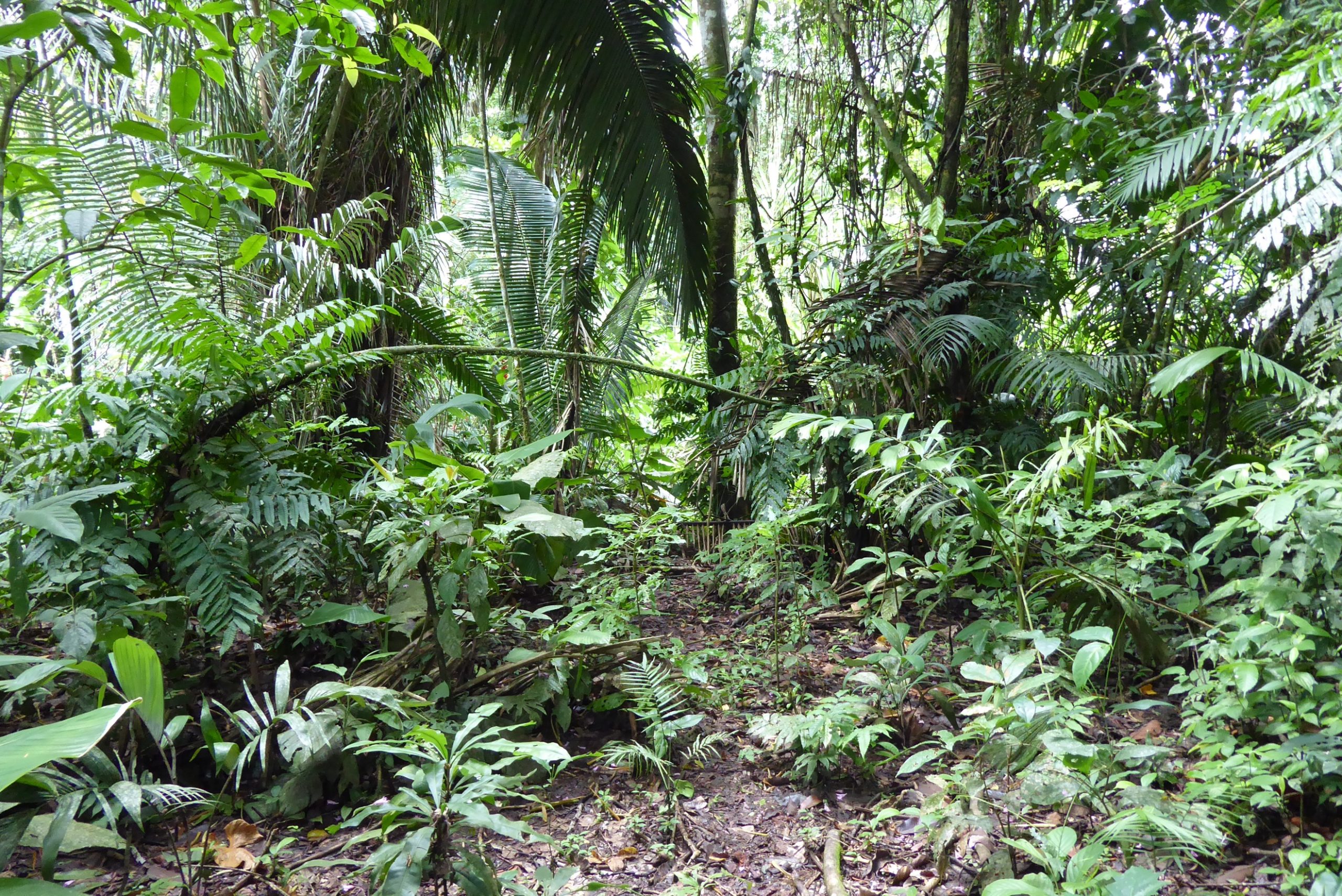Topic 9: Forests
 Brief Encounter
Brief Encounter
What is a forest?


Make a list of words and ideas that come to mind from these questions:
- What is a forest?
- What do you value about forests?
- Who or what else might use the forest?
- Why do forests matter?
Conceptualising forests
Opportunities for Embracing Uncertainty
This is an open-ended activity and will encourage students to share reflections on the varied ways forests can be understood and conceptualised. It also opens up questions of uncertainty inherent to forests in many cultures and children’s stories, where it often holds an ‘other’, unknown or spooky dimension.
Opportunities for All Students
This example is suitable for students of all ages as it can be adapted to different levels of complexity. Questions can be edited to be more specific (for example to push for different value-systems such as financial, spiritual, ecosystemic) or more reflexive. The task could also be conducted as a whole group activity, with greater guidance from the teacher, or with more autonomy for students
Opportunities for Creativity
The activity encourages students to think expansively about forests, sharing ideas, connections, creative responses, and perhaps even drawings to unpack what forests are or could be beyond scientific classifications. The image should help students to think beyond the standard understandings of what a forest is and to consider broader ways we do, or could, live with forests.
Opportunities for Linking to Climate Justice
Forests are perceived and valued differently across languages, geographies, cultures and generations. This activity provides an opportunity for students to engage with how they see forests and discuss this with others. The order of the questions will help to steer this conversation from general responses, through personal reflections to engaging with how others (including other species) might use and value forests.
 Deliberative Encounter
Deliberative Encounter
What is a forest for?


Both of these photos are of ‘forests’ in the Peruvian Amazon.
The top photo is a plantation. These trees have been planted to sequester (suck up) carbon to help combat climate change. The other is a small trail through the rainforest nearby, where plants are naturally recovering.
- How do each of these photos make you feel?
- In what ways are the forests the same or different?
- What value might these forests hold for local people; people across the world; and other species?
Valuing forests
Opportunities for Embracing Uncertainty
This activity explores the difference between forests that have been planned and managed, and more natural forests. This encourages a reflection on the inherent uncertainty in engaging with the natural world, and the difference between where humans have or have not intervened. Students can be prompted to think more deeply about how nature is being managed intensively as a solution to climate change or left alone. And what this might mean for humans and other species.
Opportunities for All Students
This activity is suitable for students of all ages but can be increased in complexity by connecting these landscapes to the politics of climate change. The plantation on the left is a reforestation project designed to optimise carbon sequestration and paid for by carbon credits. The photo on the right is in the same valley but a forest that has recovered naturally. Students can reflect on what our choices in responding to climate change mean for forests across the world. Some students may be invited to draw or model a forest instead (perhaps from outside found human and nonhuman made objects), and asked to reflect on what they have created, including what is valued about forests.
Opportunities for Creativity
Discussions on what is valuable about a forest is highly subjective, yet often reflects deeply held beliefs. Exploring this as a group allows students to see the contextual nature of both forests and concepts of value. While it could be interpreted in a very narrow conception of ‘value’ it will allow students to engage creatively with what else this term might mean. What is valued might include ecosystem services (carbon capture, climate change mitigation, water regulation); biodiversity including potential for new medicines; local livelihoods; non-timber forest products; and eco-tourism. If a forest is cut down then the value includes timber; land for livestock and agricultural production; rivers for hydroelectricity; drilling and mining (oil, gas, and metal ores, gold, aluminium).
Opportunities for Linking to Climate Justice
As with forests in general, how we value forests varies widely between cultures and languages, and is often tied to memories and sensations of being in particular forest spaces. This activity is an opportunity to engage with these sensations – and the words and language that often comes with them – while discussing differences and similarities.
 Visual Encounter
Visual Encounter
How do other people see the forest?
1. Watch this film on one family’s return to the forest to escape Covid-19:
https://www.youtube.com/watch?v=SmsWKuYuHOM&ab_channel=TheGuardian
2. Note down the different things that the forest provides Yutzu and his family:
- Why do you think that they moved further into the forest during Covid-19?
- Would you like to live in the forest and what challenges might it bring?
Exploring values associated with sustainability
Opportunities for Embracing Uncertainty
The film reflects on a time of extreme global uncertainty during the coronavirus pandemic. Combining this with the understandings of uncertainty in ecosystems from the first two activities will help students to make connections between these areas outside of our control and where people find comfort in embracing uncertainty.
Opportunities for All Students
The video can be reduced in length to account for differing attention spans. While it contains subtitles that add depth to the content, the activity can be conducted without the dialogue. Students are also able to reflect on the content as they see fit; they might see themselves through the eyes of different people featured in the documentary.
Opportunities for Creativity
The questions encourage students to move between seeing the forest through the eyes of others and reflecting on their own experiences, including through the pandemic. The final question can be used as a springboard to think creatively about how life could be different in diverse ecological settings, as well as to consider how we all might change the way that we live in the face of crises.
Opportunities for Linking to Climate Justice
The exercise encourages multicultural thinking through engagement with Kichwa conceptions of the forest and relations with the natural world. These can be discussed in connection to students’ own life experiences and cultures. It is also translated from an Ecuadorian Kichwa dialect, very different in form and structure to Latin script languages.
 Beyond the Classroom Encounter
Beyond the Classroom Encounter
If you go down to the woods today…

Outside of class, plan a walk to a local forest. It can be in your neighbourhood, a local park or a nearby woods (or forest).
- Think about what trees are there. Why might they have been planted or have grown there?
- Who are you sharing this space with as you walk through the trees?
- Who or what might have used the forest in history, how and why?
You can use the internet to find out more, look for information in the woods or even tell your own story or legend of the woods.
Exploring values associated with sustainability
Opportunities for Embracing Uncertainty
This activity encourages students to engage with outside space, to reflect further on questions of uncertainty explored in the workshop. Uncertainty is embraced through the variety of spaces that could be considered forest and in thinking through how the space has been produced and who or what is using the space. This will not have clear or simple answers.
Opportunities for All Students
All students can participate in this activity with different levels of supervision. Suggestions could be provided for woods or forests to visit in the local area, some general history, or possible questions to explore to guide students. For some students, the activity could include some self-guided research on areas, a group project and feedback to the class.
Opportunities for Creativity
This activity is structured to allow different means of engagement. Students can think creatively about the questions posed and, in the absence of definitive answers, speculate on the different possibilities. Students could also be encouraged to tell a story about the forest, perhaps even drawing, writing, or performing their own myths or legends about their local wood and the possible real or imagined life within it. Some students can build a den made from found objects to create a ‘home’ for a forest dwelling creature: they will need to consider what kind of home will meet their needs, and to contemplate what will help to this place feel like a home.
Opportunities for Linking to Climate Justice
In selecting and exploring a particular forest, students will be asked to engage with different ways that people use space and to think about why. Encouraging dialogue around these questions will uncover different value systems, words and ideas that we use to understand forests. They could be encouraged to engage with the ideas explored in the film of a different country context, and to share what they know of the possibilities and dangers of forests in different contexts.

